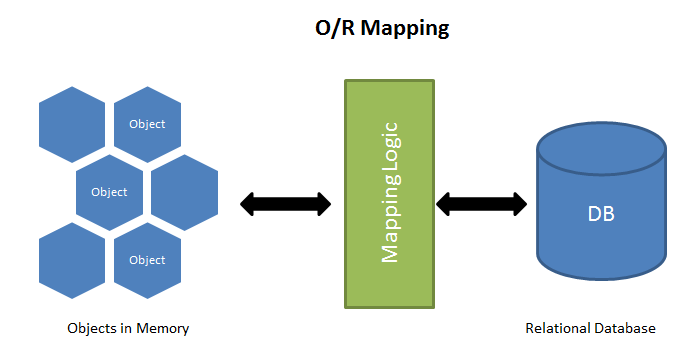ORM or Object-relational mapping is a method to access and manipulate objects without having to consider how such objects relate to their data sources. With ORMs the code needed to manipulate our data is encapsulated and hidden in a way that we don't need to work with SQL directly; we just interact with the object in the same language we're using.

ORMs provide the user with many advantages such as: It saves a lot of time thanks to writing DRY code and MVC code and you're not supposed to write poor SQL statements. And it's more flexible. As for the weak points, they're not lightweight tools and we need to learn them. Also SQL does better in big projects than them.
Examples:
1- Javascript: Sequilize, Bookshelf.js and Mongoose
2- Java: Hibernate.
3- C#: Entity Framework
And to conclude this blog I'm going to say that we shouldn't always go for ORMs but instead try working with SQL implementations like MySQL and others. It all depends on the specific needs of the application underdevelopment.

ORMs provide the user with many advantages such as: It saves a lot of time thanks to writing DRY code and MVC code and you're not supposed to write poor SQL statements. And it's more flexible. As for the weak points, they're not lightweight tools and we need to learn them. Also SQL does better in big projects than them.
Examples:
1- Javascript: Sequilize, Bookshelf.js and Mongoose
2- Java: Hibernate.
3- C#: Entity Framework
And to conclude this blog I'm going to say that we shouldn't always go for ORMs but instead try working with SQL implementations like MySQL and others. It all depends on the specific needs of the application underdevelopment.
Comments
Post a Comment